9 Essential Tips for Hiking with Dogs
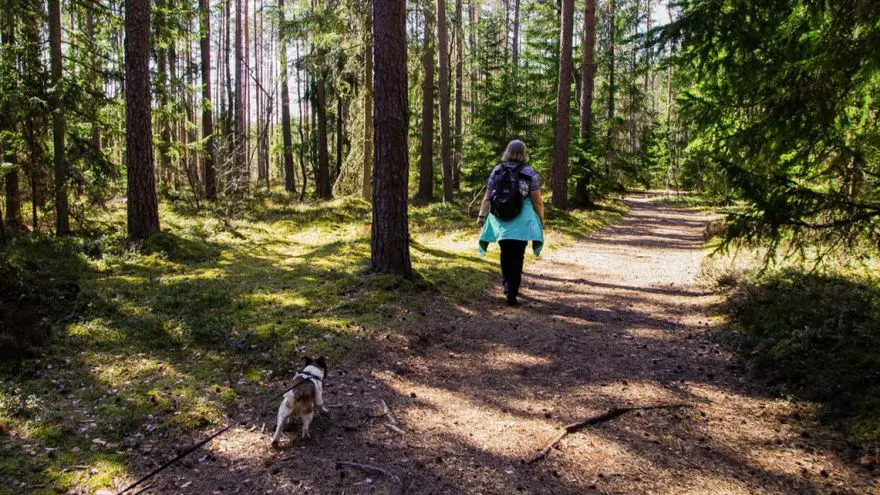 9 Essential Tips for Hiking with Dogs
thegearhunt.com
9 Essential Tips for Hiking with Dogs
thegearhunt.com
If you have a four-legged friend, hiking with them can be a memorable experience for both of you. In fact, the act of witnessing their unfiltered enjoyment and energy can actually motivate you to keep trekking farther while you enjoy scenery that can be breathtaking, and this can lead to a truly amazing time spent outdoors.
That being said, it is critical to keep in mind that your dog is still an animal, even if he is a member of the family, and there are safety measures and precautions you will need to take in order to ensure that your pet, other visitors to the trail, and yourself have a safe hike.
Dogs and Hiking – Is it Possible?
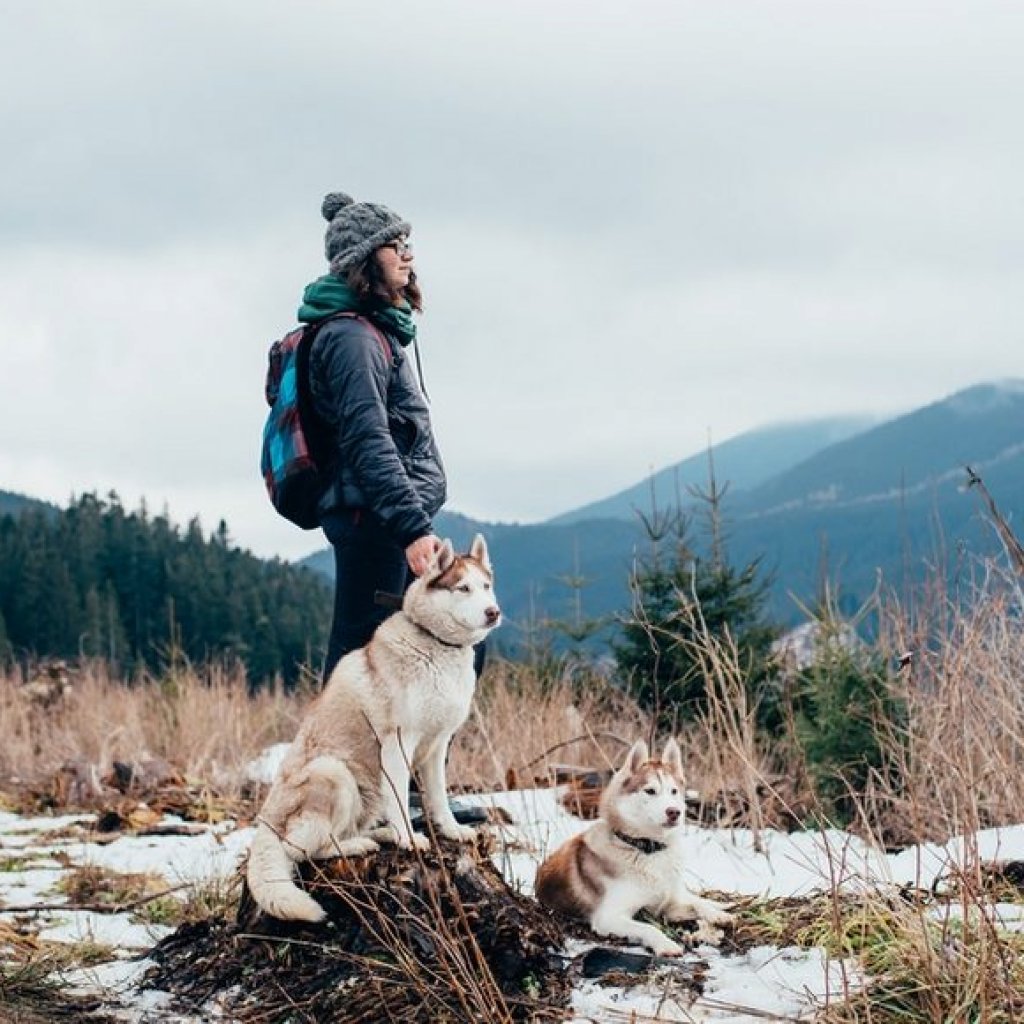 First of all, it is key that you recognize that not all dogs were created for hiking. Your animal will do his best to keep up with you, even if it means that they are risking their safety or health to do so. You are the one who needs to be realistic about the task you are setting for the animal.
First of all, it is key that you recognize that not all dogs were created for hiking. Your animal will do his best to keep up with you, even if it means that they are risking their safety or health to do so. You are the one who needs to be realistic about the task you are setting for the animal.
Dogs who are very old or young might lack the strength and stamina for the trip. Also, their immune system might be weak enough to make them vulnerable.
Any dog who has issues with their health or who isn’t fit enough physically to exercise for an entire day while enduring fluctuations in the temperatures might not be the best buddy for your hiking adventures.
Breeds that are brachycephalic (dogs with short muzzles) – like Boston terriers, boxers, and pugs – don’t tend to do very well in heat and aren’t known to have great endurance. Their narrowed nares and short muzzles will actually make it dangerous to take them on endurance hikes or in the heat. These breeds have a higher risk of exercise intolerance and heat stroke. That doesn’t necessarily mean that they can’t handle shorter treks, just don’t overdo it.
Breeds who get over-excited when they are in nature, like sight and scent hounds, or dogs that have a high drive to catch prey, will not be ideal for hiking. Some of them can actually be conditioned out of this type of behavior and learn to obey things like commands and whistles, but these breeds will be more likely to ignore your commands and take off after whatever they have spotted or caught the scent of.
Dogs that haven’t been trained properly or who don’t follow your commands can be dangerous for wildlife, other hikers, and even themselves, so you need to leave them at home.
Don’t overestimate the capabilities of your dog, even if they regularly go on walks with you. You need to take the conditions of the trail and the weather into consideration. Is the ground slippery, icy, jagged, or steep? Will there be enough shade, and will it be too hot?
Check with the vet to determine if your dog is able to go out on the trails with you. Ensure that he is up to date with his vaccinations and ask about any sort of preventative or medical measures to take in case of pathogens that are waterborne or treatment for ticks or snake bites. If your dog has a microchip, you will have a way to locate him in the event you guys get separated while you are out on the trail.
Is Your Puppy Too Young to Hit the Trail?
Michelle Richardson is a vet located in Helena, Montana. She advises that owners wait until their puppies have had all of their shots – which should be at right around 5 months – before they hit the trails. Even then, hikes should be relatively short, at only about an hour to begin with. DHPP, which is a combo vaccination that is serially administered will be needed along with a rabies shot that will be administered at about 4 months of age. You might also want to get them the Leptospirosis vaccination in order to protect them from the pathogens that can be found in the urine of wildlife.
The only way that you can prevent them from getting pathogens that are waterborne is to keep them from drinking water in the wild. The only way to treat them for those pathogens should they ingest any is with prescription medications given by vets. Instead, you should have clean water available for your dog when you are out on the trails.
Obey Leash Laws
 It might be nice to be under the impression that our dogs give the people they meet on the trails as much joy as they give us, but that is far from the case.
It might be nice to be under the impression that our dogs give the people they meet on the trails as much joy as they give us, but that is far from the case.
A lot of people are scared of dogs, have an aversion to them, or they may have a leashed dog that can behave aggressively towards your dog. There are quite a few reasons that letting your dog be off a leash when you are on the trail can be a bad idea.
Do your research before you head out and be sure that you won’t be breaking any rules. For example, dogs aren’t allowed in most of the national parks in the US, and most of the trails that are dog-friendly require the animal to be on a leash that has 6 feet or less of a length. Disobeying these rules can mean that you will have to pay stiff fines and your otherwise fun-filled day will be ruined for you, your pet, and whoever they bother on the trails.
A lot of trails have designated areas where dogs can be off their leashes, and this is ideal for those dogs who tend to follow voiced commands. That being said, you need to be honest with yourself when it comes to your animal’s training. If he only responds to commands about half the time, he isn’t under voice command. If he tends to vanish from sight as soon as you let him off the leash, he might harm habitat that can be sensitive, get in the way of a cyclist, or run into a bit of wildlife that is unwelcome.
Clean Up After Them
While keeping the results of your dog’s defecation isn’t exactly something that is pleasant, the benefits of this go far beyond keeping peoples’ shoes clean. The excrement of dogs has harmful levels of certain bacteria that can harm groundwater supplies, native habitats, and local wildlife.
Many trails offer stool bags for dogs, but not all of them have this feature. Also, there is no way to tell if those stations have bags available until you get there. You need to make sure that you have them with you whenever you take your animal out on the trails. You can also buy portable doggie bag bins and bags for about $10 that will attach right to the leash.
When it comes to getting rid of the waste from your dog, remember to respect the environment and put your doggie bags into a trashcan that has a lid. If you are camping, try to leave any doggie doo a minimum of 200’ from any campsites.
Bring Enough Food and Water
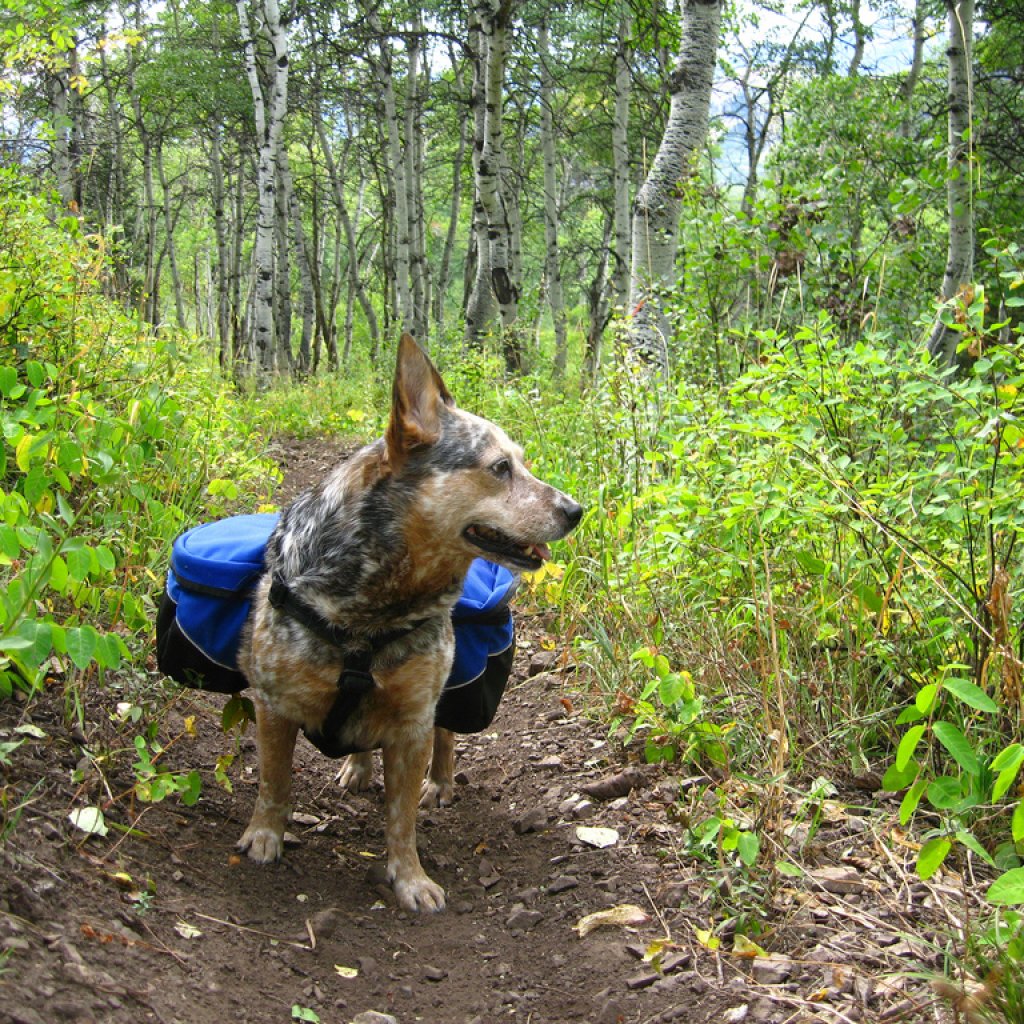 When you leave home for a long hike that will require you to bring food and water, keep in mind that there are more mouths to feed than your own.
When you leave home for a long hike that will require you to bring food and water, keep in mind that there are more mouths to feed than your own.
We have to remember that our canine friends are covered in fur and can’t sweat as we do, so this means that they have a higher risk when it comes to overheating. You might not need to take water and food when you walk your dog at home, but when you hit the trails, it is always a good idea to take plenty of H2O for both you and your pet. Just keep in mind that you will also need a dish to put the water in.
If the weather is truly hot, you might even supplement the water you give your dog with some sort of electrolyte fluid, like Pedialyte. It is critical that you keep the animal from drinking from any sort of standing water or from ingesting too much salt water. Water that is standing can have many bacteria in it, as well as algae and parasites that can make dogs very ill. Salt water can cause dehydration and diarrhea.
You might also want to pack a few dog treats to help your animal keep up their energy level on long hikes. If you take him on a hike that is strenuous, they might also need a bit more dinner than usual to assist them with recovering and to prevent injury and sickness. They need calories to stay energized just like you do.
Also, you might consider buying a dog pack that will allow them to carry all of their own supplies. A healthy and fit dog is able to carry as much as ¼ of their own weight depending on what breed they are.
Make Sure They are Trail Fit
Dogs that are very old or very young just can’t handle the same intensity or length of trails that other dogs can. Respect the limitations of your dog and don’t push them until they are exhausted. If you have questions regarding what they can handle, ask your vet.
When dogs lie down, foam at the mouth, or pant intensely, they need a bit of time to cool down. At this point, you need to either slow the pace drastically or turn around. Just as we can, dogs can lose or gain in terms of fitness. If your dog got used to short walks during the colder months, they can’t be expected to just go for a sudden 10-mile hike as soon as the weather warms up. You can gradually build their stamina in terms of both intensity and distance so that they will be able to safely enjoy the outdoors.
Doggie First Aid
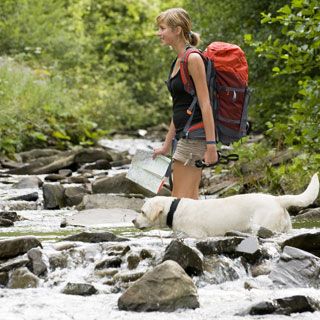 As it is with smaller children, dogs can be mischievous on the trails. Keeping a first aid kit for both people and dogs with you on your hikes will enable you to doctor any burns, sprains, bites, or gashes that the animal might get while you are on the trail.
As it is with smaller children, dogs can be mischievous on the trails. Keeping a first aid kit for both people and dogs with you on your hikes will enable you to doctor any burns, sprains, bites, or gashes that the animal might get while you are on the trail.
You should be able to find a relatively cheap first aid kid for dogs. It will give you everything that you might need in the event that your animal is injured on the trail. You need to keep in mind that dogs can’t safely take the same medications for pain that we take most of the time, so if your animal is injured and experiencing pain, you need to talk to your vet.
Think about Rattlesnake Aversion Training
Maybe you live in the American West. If this is the case and you are frequently on the trails with your dog, this type of training should be seriously considered. These classes typically last for a bit under an hour and they might save the life of your animal.
This type of training can cost as much as $300 depending on which method is used – some use shock training while others use methods that are more natural – and they need to be repeated every couple of years.
Dog Clothes – Silly yet Necessary
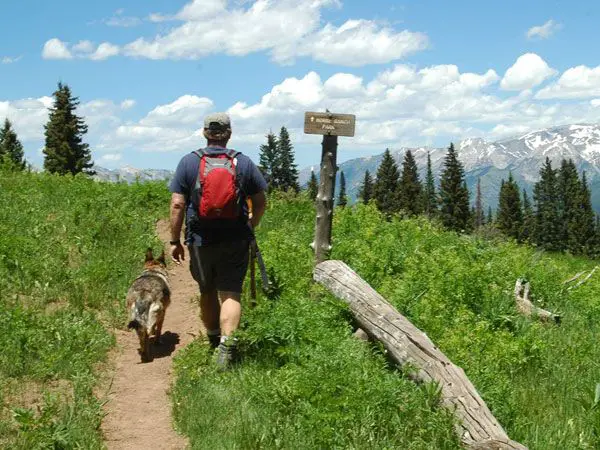 We aren’t talking about putting your animal in an argyle sweater in order to make them look fit for the links. If your dog is a short hair breed or spends most of their time inside, they might benefit from having an additional layer against cold and/or wet conditions.
We aren’t talking about putting your animal in an argyle sweater in order to make them look fit for the links. If your dog is a short hair breed or spends most of their time inside, they might benefit from having an additional layer against cold and/or wet conditions.
Ruffwear is a brand that sells a good variety of coats for dogs and breeds of any size. On the other hand, if heat is an issue, you might be able to keep your animal cooler by putting a vest on him that has been soaked in water.
Most dog breeds can benefit from shoes for dogs known as dog booties. These are great when the conditions are snowy or cold. They can also be a benefit for those times when you will be traversing hot sand or climbing over rocky terrain. Yes, your dog will hate them, but it is better than seeing the animal in pain because their paws are frozen, cut, or burnt.
Post Hike Pup Checks
Remember that you experience the trail from a height of 5 or 6 feet, but your dog is traversing through brush that is knee high and going past all types of burrs, bugs, and plants.
Make a habit of checking the animal for burns, burrs, cuts, and ticks when you make it back to the car. If you happen to locate a tick, carefully remove it and put it into a sealed bag so that you can take it and show your vet. If you were on the trail for a long time and your animal got very dirty, a good doggie bath is also a good time to check for these things.
All in all, be respectful of others on the trail and protect your animal and you should be fine out on the trails with your dog.
Sources
- You Tube, Hiking with Dogs – 15 Killer Tips to get Going
- Dogster, 10 Tips for Hiking with Dogs
- Pets Best, 5 Tips for Hiking with Dogs
- My Open Country, Hiking with Dogs (Bringing Your Best Friend on the Trail)















